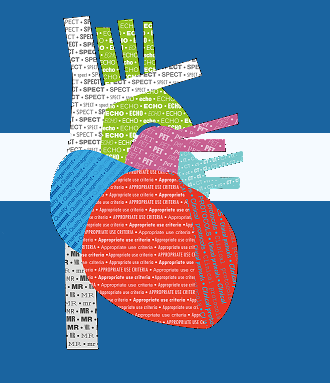Speaker
Dr
Alejandro Jiménez
(Instituto Nacional de Cardiología)
Description
Background: The presence of a Q wave in an electrocardiographic study is traditionally interpreted as indicative of a transmural myocardial infarction, but there are cases in which a non-transmural infarction also presents a pathological Q wave. PET myocardial perfusion scanning represents a useful tool to evaluate the myocardial blood flow and infarction transmurality. The objective of this study is to compare the myocardial blood flow (MBF) and perfusion reserve (MPR) of patients with a Q-wave in the ECG to patients with no Q-wave using 13N-Ammonia PET scan.
Methodology: Fifteen non-transmural myocardial infarction patients were retrospectively included, six with pathological Q-waves (40%) and nine without this ECG finding (60%). All patients underwent a rest and adenosine-stress PET perfusion scan with 13N-ammonia. Acquisition data was reconstructed for the semi-quantitative evaluation of ischemia and the quantitative evaluation of rest and stress MBF as well as MPR. A Mann-Whitney U test was performed between the two groups. A p-value < 0.05 was considered statistically significant.
Results: There was no significant difference in demographic and clinical data. No residual ischemia was documented in any of the patients through semi-quantitative analysis. Median age was 60+13.68 and 68.11+ 7.6 years old, for Q-wave patients and non-Q-wave patients, respectively. Total MBF rest and stress was not significantly different between both groups, rest (p=0.22) and stress (p-value=0.11). Global MPR was not significantly different between both groups (p=0.1).
Conclusion: The ECG finding of pathological Q-waves in patients with a previous non-transmural MI does not relate to their PET-measured myocardial blood flow or myocardial perfusion flow reserve. It is possible that other factors, such as infarct extension, might explain the presence of pathological Q-waves rather than transmurality or perfusion status. Further research is therefore warranted.
| Country/Organization invited to participate | Instituto Nacional de Cardiología |
|---|
Authors
Dr
Alejandro Jiménez
(Instituto Nacional de Cardiología)
Dr
Erick Alexánderson
(Instituto Nacional de Cardiología "Ignacio Chávez")
Co-authors
Dr
Ana Ayala-German
(Intituto Nacional de Cardiología "Ignacio Chávez")
Dr
Andrea Gallardo-Grajeda
(Instituto Nacional de Cardiología "Ignacio Chávez")
Dr
Erick Morales
(Instituto Nacional de Cardiología "Ignacio Chávez")
Dr
Luis Juárez
(Instituto Nacional de Cardiología)
Mr
Oscar Pérez
(Instituto Nacional de Cardiología "Ignacio Chávez")
Dr
Victor H. Gómez-Johnson
(Intituto Nacional de Cardiología "Ignacio Chávez")

